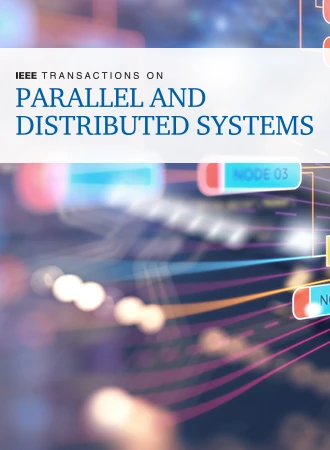Graph-Centric Performance Analysis for Large-Scale Parallel Applications
IF 5.6
2区 计算机科学
Q1 COMPUTER SCIENCE, THEORY & METHODS
IEEE Transactions on Parallel and Distributed Systems
Pub Date : 2024-03-06
DOI:10.1109/TPDS.2024.3396849
引用次数: 0
Abstract
Performance analysis is essential for understanding the performance behaviors of parallel programs and detecting performance bottlenecks. Whereas, complex interconnections across several types of performance bugs, as well as inter-process communications and data dependence, make efficient performance analysis even more difficult. Despite the fact that many performance tools have been developed, accurately identifying underlying performance bottlenecks for such complex scenarios requires specific in-depth analysis. Significant human efforts and analysis knowledge are often required to implement each specific analytic task. To alleviate the complexity of developing specific performance analytic tasks, we present a programmable performance analysis tool, called以图为中心的大规模并行应用性能分析
性能分析对于了解并行程序的性能行为和检测性能瓶颈至关重要。然而,跨越几类性能错误的复杂互连以及进程间通信和数据依赖性,使得高效的性能分析变得更加困难。尽管已经开发了许多性能工具,但要准确识别此类复杂情况下的潜在性能瓶颈,还需要进行具体的深入分析。要完成每项具体的分析任务,往往需要大量的人力和分析知识。为了减轻开发特定性能分析任务的复杂性,我们提出了一种名为 PerFlow 的可编程性能分析工具。在 PerFlow 中,一个逐步进行的性能分析流程被表示为一个分析流程图,该流程图由多个性能分析子任务(即通行证)构建而成,这些子任务可以由开发人员定义,也可以由 PerFlow 内置的分析通行证库提供。此外,我们定义了一个性能抽象图来描述并行程序的性能行为,其中的边表示并行单元之间的交互,因此分析子任务被转换为图分析任务。PerFlow 为开发分析任务提供了丰富的 Python 应用程序接口。为了证明 PerFlow 的有效性,我们对现实世界中代码行数多达 700 K 行的应用程序进行了案例研究。结果表明,PerFlow 使特定性能分析任务的实施变得更加容易,而且这些任务可以自动、高效地执行,以检测潜在的性能瓶颈。
本文章由计算机程序翻译,如有差异,请以英文原文为准。
求助全文
约1分钟内获得全文
求助全文
来源期刊

IEEE Transactions on Parallel and Distributed Systems
工程技术-工程:电子与电气
CiteScore
11.00
自引率
9.40%
发文量
281
审稿时长
5.6 months
期刊介绍:
IEEE Transactions on Parallel and Distributed Systems (TPDS) is published monthly. It publishes a range of papers, comments on previously published papers, and survey articles that deal with the parallel and distributed systems research areas of current importance to our readers. Particular areas of interest include, but are not limited to:
a) Parallel and distributed algorithms, focusing on topics such as: models of computation; numerical, combinatorial, and data-intensive parallel algorithms, scalability of algorithms and data structures for parallel and distributed systems, communication and synchronization protocols, network algorithms, scheduling, and load balancing.
b) Applications of parallel and distributed computing, including computational and data-enabled science and engineering, big data applications, parallel crowd sourcing, large-scale social network analysis, management of big data, cloud and grid computing, scientific and biomedical applications, mobile computing, and cyber-physical systems.
c) Parallel and distributed architectures, including architectures for instruction-level and thread-level parallelism; design, analysis, implementation, fault resilience and performance measurements of multiple-processor systems; multicore processors, heterogeneous many-core systems; petascale and exascale systems designs; novel big data architectures; special purpose architectures, including graphics processors, signal processors, network processors, media accelerators, and other special purpose processors and accelerators; impact of technology on architecture; network and interconnect architectures; parallel I/O and storage systems; architecture of the memory hierarchy; power-efficient and green computing architectures; dependable architectures; and performance modeling and evaluation.
d) Parallel and distributed software, including parallel and multicore programming languages and compilers, runtime systems, operating systems, Internet computing and web services, resource management including green computing, middleware for grids, clouds, and data centers, libraries, performance modeling and evaluation, parallel programming paradigms, and programming environments and tools.
 求助内容:
求助内容: 应助结果提醒方式:
应助结果提醒方式:


